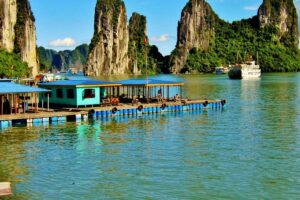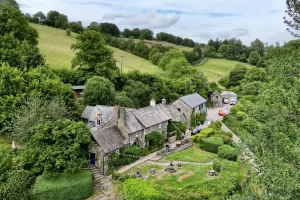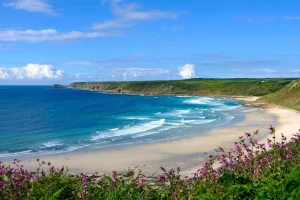It turns out you don’t need to go to the tropics to find soft sandy beaches and crystal clear waters. Salento, on the very heel of Italy, has it all.
Salento has earned the name ‘the Maldives of Italy’ thanks to its paradise coasts. Part of the administrative region of Apulia, it also boasts a rich cultural heritage, influenced by a blend of cultures which have left their mark over the centuries.
It sits between the Adriatic Sea on the east and the Ionian Sea on the west. Even though it’s a relatively small peninsula – 100 kilometres long and 40 kilometres wide – the two coasts are wildly different.

Where is the ‘Maldives of Italy’?
The ‘Maldives of Italy’ are located on the Ionian side of the peninsula. Some of the most stunning spots here are Punta Prosciutto (Ham Point), Pescoluse and the natural parks of Punta Pizzo and Porto Selvaggio, where the sea meets sand dunes covered in evergreen Maquis shrubland.
Porto Cesareo is part of a marine reserve perfect for snorkelling, as its seabed has sub-tropical features and animals that are usually seen in warmer seas. The town has natural islands sitting in front of it, such as Isola dei Conigli (Rabbit Island), that can be reached by boat or just by swimming.
Gallipoli on the western side is a must-visit. Its historical centre is an island turned fortress accessible via a 500-year-old bridge, with an intricate web of alleys that seem frozen in time.
The main attractions are the fortress, Cathedral Sant’Agata and Spiaggia della Purità (Purity Beach). The nearby Baia Verde is one of the best spots for nightlife in the whole country.
The two seas meet in Santa Maria di Leuca, which is one of the very extremities of Italy. People come to the tip, called Punta Ristola, to admire both sunset and sunrise.

Boat tours show how different the two sides of the coast are, as small rocks on the Ionian Sea turn into dramatic cliffs on the Adriatic. Both sides have caves, and some of them used to be home to Paleolithic people when the Mediterranean was dry land.
Archaeologists have also found inscriptions from the Greek and Roman eras, mostly from sailors asking gods to protect them on their travels.
Behind the lighthouse there is a basilica, which used to be a temple to the goddess Minerva, though it is said that Saint Peter christianised it during a pilgrimage to Rome.

Salento’s other side offers rugged coastline
The Adriatic side of Salento doesn’t look like the Maldives, but it’s no less stunning. The rugged coastline turns into caves and cliffs to explore by boat or while snorkelling or rock climbing.
The most notable spot is Il Ciolo, a canyon overlooked by a 40-metre high bridge which is also a platform for whoever has the courage and the skills to dive.
The natural swimming pool of Grotta della Poesia (Poetry Cave) allows for more accessible dives of ‘just’ five metres. Among the many caves on the eastern side, the Grotta della Zinzulusa (Zinzulusa Cave) is one of the most spectacular and it even hosts a nativity scene at Christmas time.
You’ll find that several beaches and towns in Salento are named after a tower (torre), such as Torre Lapillo, Torre Chianca, Torre Inserraglio, Torre dell’Orso and Torre Specchia Ruggeri. They were built in the 15th and 16th centuries when Salento was part of the Kingdom of Naples.
Because of its geographical location, Apulia was deemed a strategic point between eastern and western Europe and Africa, so it had to be well defended from invasions.
Another key destination on the Adriatic side is Otranto, a whitewashed town overlooking the azure sea. The historical centre is protected by Porta di Terra, a gate dating back to the Napoleonic era. The nearby Castro and Santa Cesarea are also worth a visit to enjoy the fishing village feel.
What are the best inland towns to visit in Salento?
The magic of Salento continues inland, where olive trees, vineyards and typical farmhouses called masseries dot the landscape.
There are many towns with well-preserved historical buildings, such as Ostuni and Nardò, but the city of Lecce is the most unmissable of all.
The largest town in Salento, Lecce is home to the local university and main museums. It’s built in Baroque style with chalky stone that appears pinkish under the sun.

You can find an amphitheatre in its main square, which was excavated around a century ago after a local researcher figured out the area had been erected on Roman ruins. Because they didn’t want to destroy the whole square, Piazza Sant’Oronzo, only half of the amphitheatre is visible below the ground level.
Among the many churches of the Lecce, check out the cathedral and the Basilica for their exquisite Baroque details.
What is the food like in Salento?
The local cuisine in Salento combines pasta, fish, seafood, burrata and locally grown vegetables such as tomatoes, aubergines and olives.
The signature dish is ciceri e tria (pasta with fried chickpeas), which is cooked all year long despite its wintery taste. The typical lunch on the go is puccia, a flatbread usually filled with local cheese, cured meat and vegetables.
For dessert (or breakfast!) try the pasticciotto, pastry filled with egg custard, and ice cream made with carosello, a fruit that vaguely tastes like cucumber.

When is the best time to visit Salento?
Salento is famous for its blustery wind but gets scorching hot, so it may be best to avoid July and August when it’s at its warmest and busiest.
It’s one of the trendiest areas of Italy after being ‘discovered’ by mass tourism over the past decade. Once you visit, you’ll understand why.
The crowds die down a little in May, June and September.
Source : Euro News



























